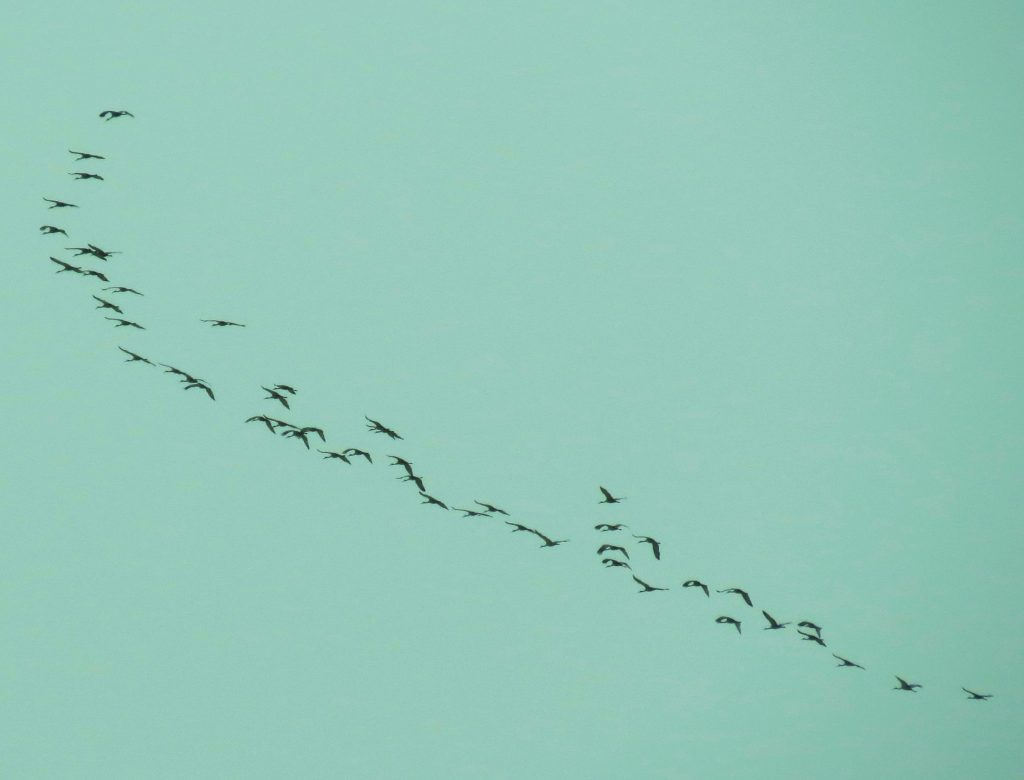Sandhill Crane
Grus Canadensis
by Dan Potts, Local Naturalist
The Sandhill crane is one of the largest birds of North America, and is not to be confused with the extremely rare, white whooping crane usually found back East.
Sandhills have red at the eye, a white cheek, long neck, short black bill, long black legs, and although mostly gray in color, I find it interesting that some individuals may actually stain their own back and neck feathers a rusty brown color by preening them with mud.
They are so tall and often so brownish that this native bird is often mistaken for deer in Utah’s marshes, grasslands, and fallow fields, where they are likely to spend the entire summer raising their young.
These large predatory birds and their young will kill and eat almost anything that moves – they are indeed formidable “post dinosaurs”!
In the past cranes were commonly seen in the larger open spaces along the Jordan River like the those previously seen in Utah County and northern Salt Lake County, however, development of riverside soccer fields, off road vehicle sports complexes, and housing sprawl has largely reduced their habitats.
Today, it is now more likely to only hear their calls along the river as their flocks fly north and south overhead during their annual spring and fall migrations.
Their loud trumpeting in-flight call, a rattling kar-r-r-r-o-o-o, can often be heard for more than a mile.
Last fall my wife and I heard a flock of about 50 flying over our house about a block from the Jordan. We could barely see them, although I did manage to take the attached photo of that raucous flock.
Today they still land to feed, breed and rear their young on larger, undeveloped open spaces farther to the north and south ends of Jordan River away from our rapid developments.
So, if you hear a “rattling” noise from the sky this fall look up to see if it is a flock of one of our most magnificent birds in America, a Sandhill cranes!


